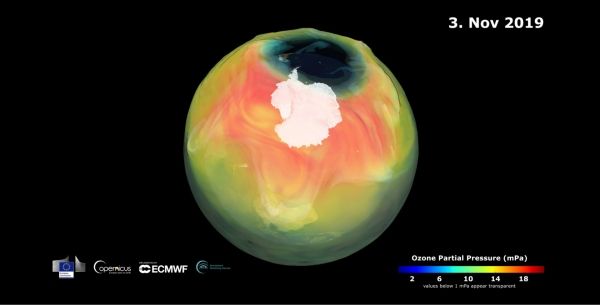The size of the ozone hole fluctuates – usually forming each year in August, with its peak in October, before finally closing in late November or December. Not only will the hole close earlier than usual in 2019, but it is also the smallest it has been in 30 years owing to unusual atmospheric conditions.
Forecasts from the Copernicus Atmosphere Monitoring Service (CAMS), which uses total ozone measurements from the Copernicus Sentinel-5P mission processed at the German Aerospace Center, have forecasted that this year’s ozone hole will close sooner than usual.
Antje Inness, CAMS Senior Scientist commented, “The ozone hole’s maximum extent this year was around 10 million sq km, less than half of the size the ozone hole usually reached in the last decades. This makes it one of the smallest ozone holes since the 1980s. Our CAMS ozone forecasts predict that the ozone hole will close within a week.”
ESA’s mission manager for Copernicus Sentinel-5P, Claus Zehner, noted, “This record-breaking small ozone hole size and duration during 2019 was caused by a warming of the stratosphere over the South Pole. However, it’s important to note that this is an unusual event and does not indicate that the global ozone recovery is speeding up.”
Continue reading at European Space Agency
Image via European Space Agency


